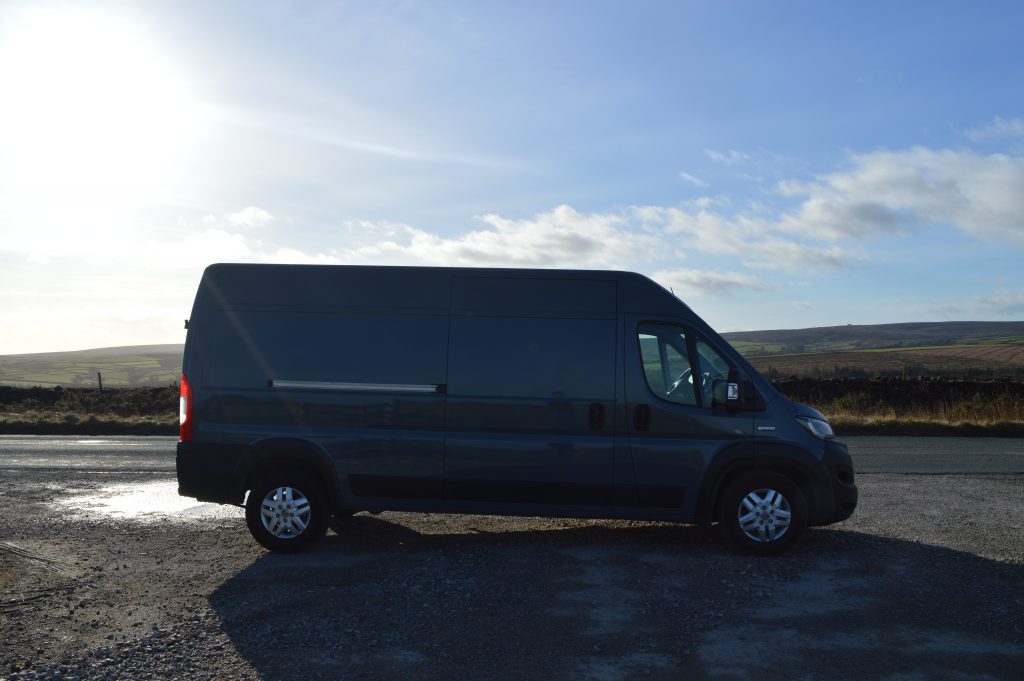Road Test and Review – Fiat Ducato 2022
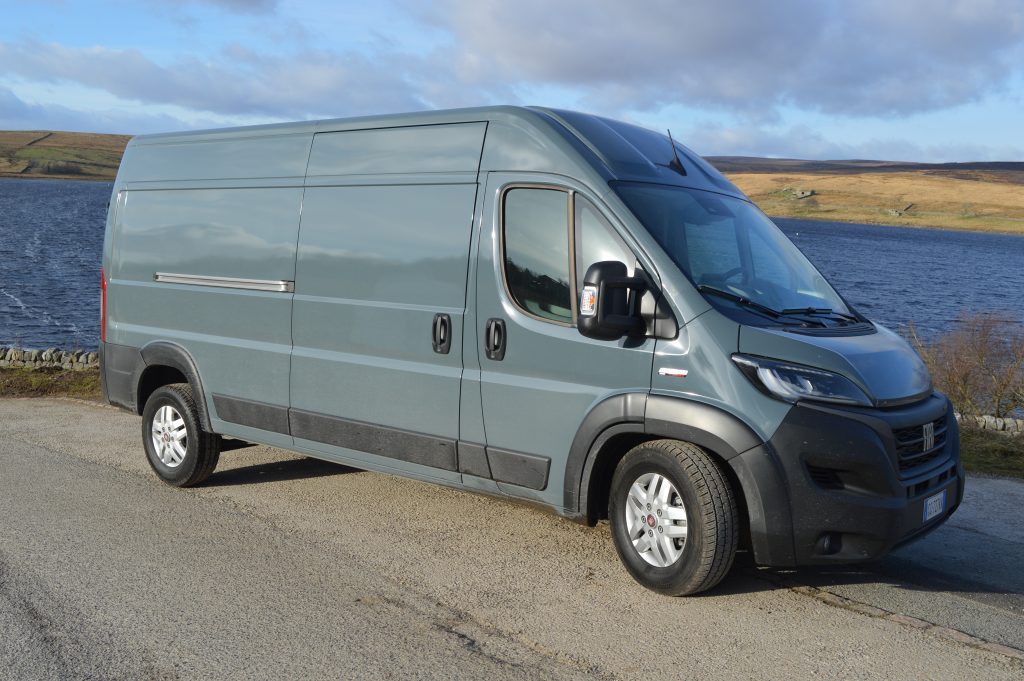
Overview
It’s been around for quite a while now. The Fiat Ducato has a reputation for being a no nonsense workhorse with excellent payloads, but perhaps not known for state of the art tech and creature comforts. Enter stage left the Ducato in its very latest incarnation, the Series 8 which has no doubt raised some eyebrows in the boardrooms of some other van manufacturers. It’s now boasting some class leading technology which is on a par with many of the latest passenger cars.
As with its predecessors, the Ducato is available in 4 body lengths, 3 heights and 4 GVM’s. Fiat previously used their own engines but the facelifted Ducato sees the Italian company fall in line with its Stellantis stablemates, Vauxhall, Citroen and Peugeot in using the same 2.2 litre diesel engine. It’s available at 120HP, 140HP 160HP and 180HP outputs and can be coupled to a manual or 9-speed automatic gearbox. 3 trim levels are on offer, Standard, Tecnico Plus and Business Edition.
The test van supplied by Fiat was an early, Italian registered left hand drive version, fitted with the 160PS engine and the auto gearbox. Whilst broadly in Business Edition trim it’s important to mention that this vehicle may differ in specification to vehicles marketed in the UK and some equipment may be optional. From the outside the new van can be easily identified by the large FIAT badge within the front grille, and a new, imposing front bumper and LED headlight combination which includes particularly snazzy daytime running lights.
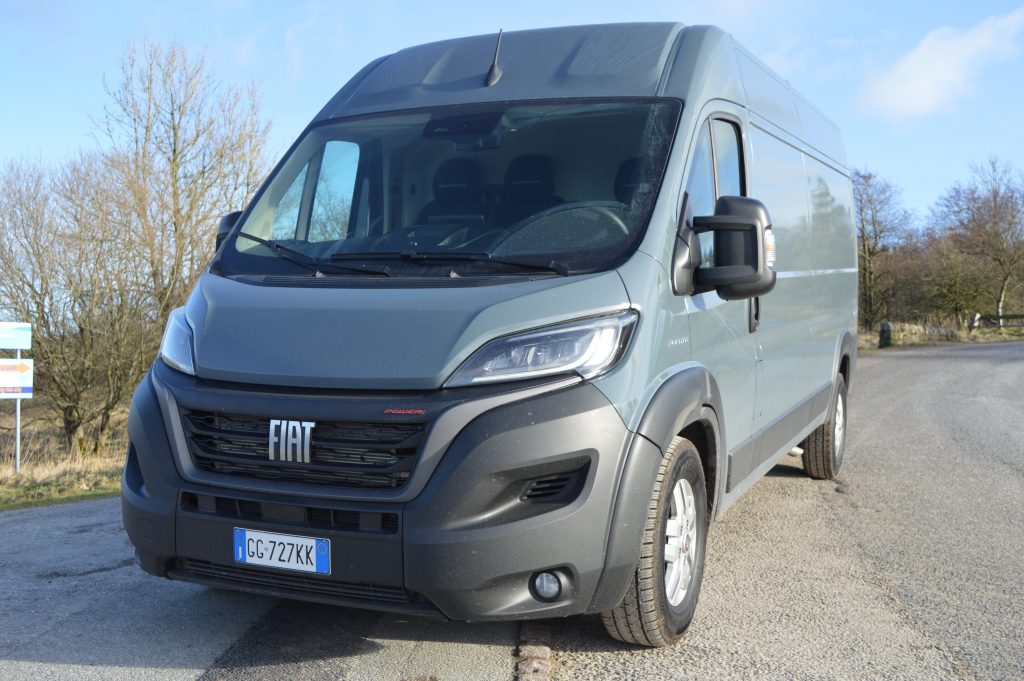
The new technology…
There’s no doubt though that the big news with the new Ducato is the tech, most, but not all of which of which comes standard in the Business Edition van. For starters, there’s a ‘Full Digital Cockpit’ – a digital instrument panel and a touchscreen 10 inches in size, currently the largest in any van. The Italian company claim that the Ducato is ‘Level 2’ when it comes to autonomous driving when specified with automatic transmission and the 4 Advanced Driver Assistance Systems (ADAS): autonomous emergency braking, adaptive cruise control with ‘Stop&Go’, lane keeping assist and traffic jam assist. There’s connectivity too, with Fiat’s ‘Uconnect’ system allowing for remote monitoring and alerts as now being introduced by other manufacturers.
Other driver assistance features include intelligent speed assist (using traffic sign recognition to adjust the vehicles speed limiter), attention assist, crosswind assist, autonomous post collision braking and active park assist. The higher trim levels of the van come with an electronic handbrake.

In the cab
The introduction of the digital display and the multimedia screen has brought the dash bang up to date in appearance, with few of the more dated aspects of the previous model remaining. The centrally mounted screen isn’t angled toward the driver but, in practice there were no issues in visibility or whilst operating the unit. Although the test van had an excellent navigation system installed, the inclusion of Apple CarPlay and Android Auto smartphone integration will probably satisfy most owners.
The test van had a digital rear view mirror, a luxury these days on vans with a solid bulkhead and windowless rear doors, and the excellent, roof mounted reverse camera gives superb rear vision when manoeuvring. A couple of USB sockets were, in the test van complimented by a 240 volt 150 watt mains power outlet, although there was a touch of disappointment to be greeted by an Italian 2 pin socket…
There’s loads of in cab storage in the doors and dash, together with an overhead tray. I struggled to get completely comfortable in the driver’s seat despite being less than 6 feet tall. This has always been a common complaint from Ducato drivers which suggests that the seat and cab were never designed for those above a certain height. I didn’t have the opportunity to take the van on a long journey but suspect that this could become an issue and it’s not something I’ve come across in the likes of the Transit or Sprinter. The centre seat folds down to allow the back to be used as a makeshift desk.
Air conditioning is standard throughout the range, with the exception of the Standard trim level coupled with the manual gearbox. Tecnico and Business Plus benefit from an upgraded climate control system. These models also get keyless starting and a wireless phone charging pad.
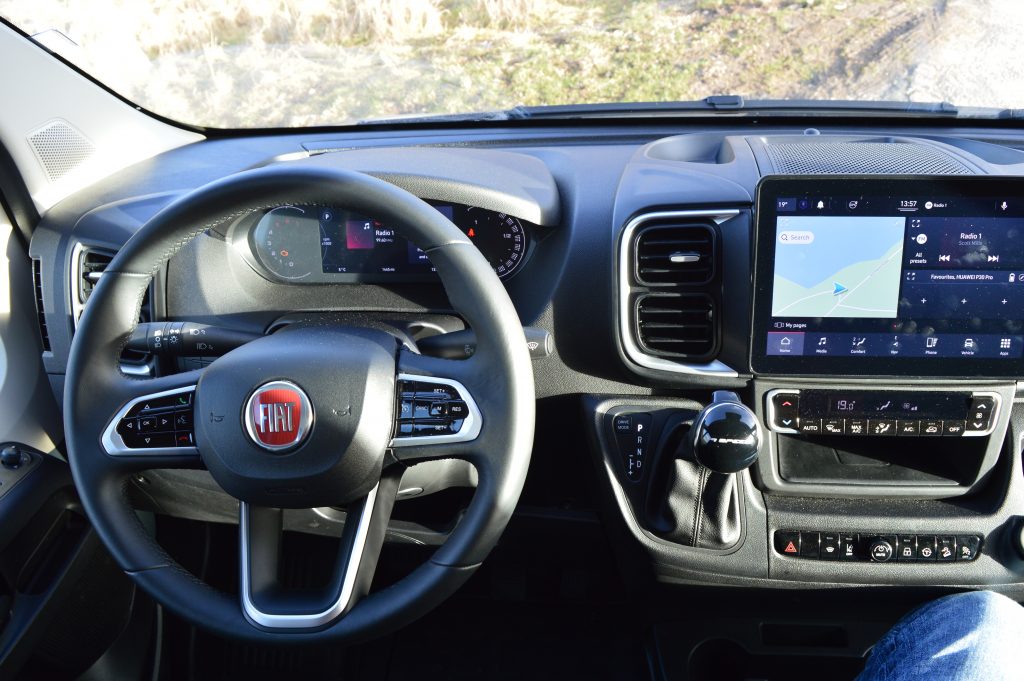
The load area
Tested was the long wheelbase, high roof version of the Ducato, probably the most popular derivative. It offers an excellent payload of 1472kgs, a load length of 3705mm and a volume of 13 cubic metres. There are plenty of lashing rings to secure your loads and the test van was blessed with LED load area lighting, something other manufacturers really need to be adopting as standard these days. Access to the rear in particular would be improved with the inclusion of a step.
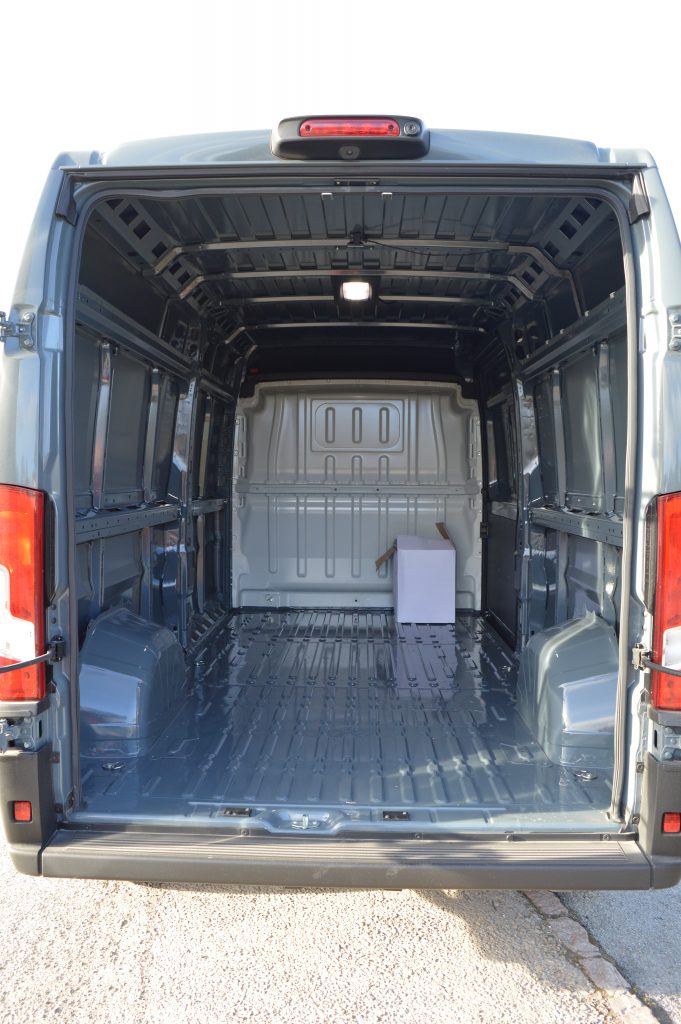
On the road
As you’d expect, the 160HP engine provides more than enough power, especially in an unladen van as tested. The 9-speed automatic transmission is a delight, so much so that you don’t notice it in operation, changing up and down through the ratios almost seamlessly. Engine noise is a little intrusive, sounding a bit agricultural when we’re now becoming accustomed to some very quiet Euro 6 units in competitor vans. Forward visibility is excellent with the deep windscreen not being obscured too much by the dash.
The semi autonomous tech makes itself apparent at times during everyday driving. Drift a little too close to the centre line on a gentle curve and the electric power steering will not only turn the steering wheel in a corrective action, it’ll maintain the distance from the line throughout the corner, straightening only as the road does the same. Although we had no opportunity to test the adaptive cruise control fully, the emergency braking facility made its presence felt as we failed to notice a car braking suddenly ahead.
The ride is a little firm but, given that the van was tested with no load we’d suspect that this would be less noticeable with a tonne or so in the rear.
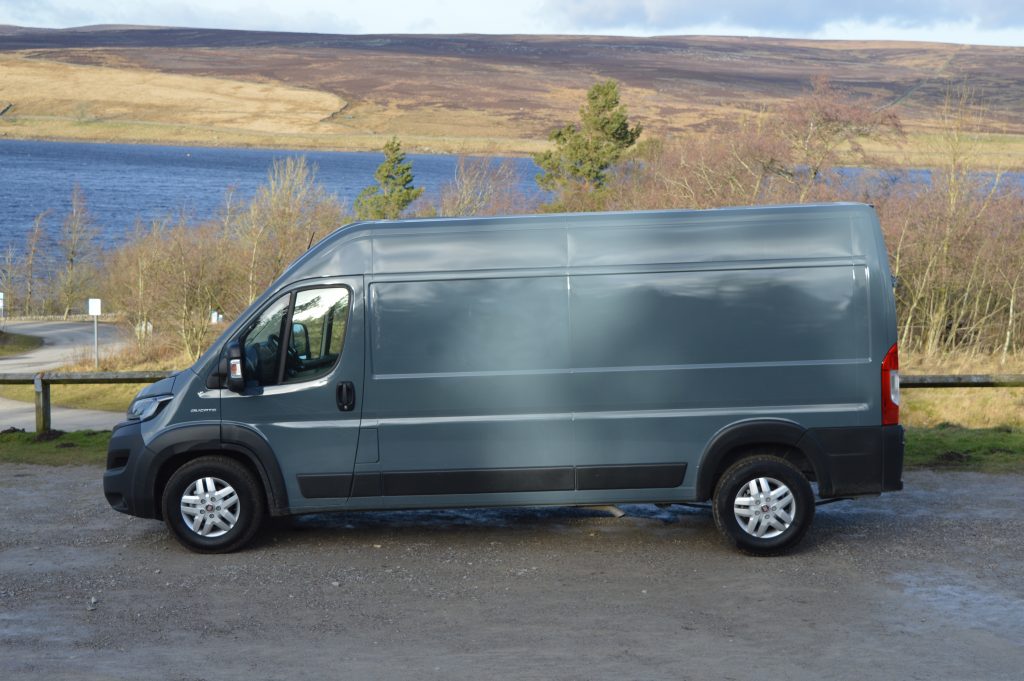
Running costs
The new Ducato has a 2 year / 36,000 mile service interval and a 3 year / 100,000 mile warranty. Official fuel consumption for the 160HP automatic is a combined figure of 34.4mpg.
Conclusion
Previously, people would generally choose a Ducato on the basis of value for money and / or its load carrying capabilities. It wouldn’t normally be high on a shopping list due to its level of equipment. With the Ducato Series 8, things have changed. Some of the available tech isn’t yet offered on competitor vans which would often be considered premium product and, although it is dated in other areas such as style and some aspects of comfort, it’s now a contender for many who are able to put brand prejudice aside. An excellent large van which holds its own with anything else out there and there is little wonder that it’s winning industry awards.
